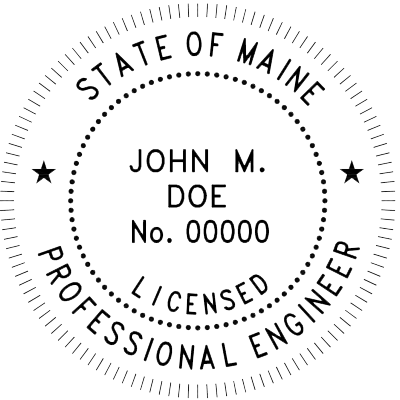Fundamentals of Engineering & Professional Engineer Exams
What are the FE and PE exams good for?
To a client, being a professional engineer (PE) means you’ve got the credentials to earn their trust. To an employer, it signals your ability to take on a higher level of responsibility. Among your colleagues, it demands respect. To yourself, it’s a symbol of pride and measure of your own hard-won achievement.

To use the PE seal, engineers must complete several steps to ensure their competency.
- Earn a four-year degree in engineering from an accredited engineering program
- Pass the Fundamentals of Engineering (FE) exam
- Pass the Principles and Practice of Engineering (PE) exam
- Complete four years of progressive engineering experience under a PE
Then, to retain their licenses, PEs must continually maintain and improve their skills throughout their careers.
Learn more
Yet the results are well worth the effort. By combining their specialized skills with their high standards for ethics and quality assurance, PEs help make us healthier, keep us safer and allow all of us to live better lives than ever before.
A century ago, anyone could work as an engineer without proof of competency. In order to protect the public health, safety, and welfare, the first engineering licensure law was enacted in 1907 in Wyoming. Now every state regulates the practice of engineering to ensure public safety by granting only Professional Engineers (PEs) the authority to sign and seal engineering plans and offer their services to the public.
The best time to take the FE exam is during the last year of your undergraduate degree program in Mechanical Engineering at UMaine. For more information, visit https://www.maine.gov/professionalengineers/
What makes a PE different from an engineer?
PEs must also continuously demonstrate their competency and maintain and improve their skills by fulfilling continuing education requirements depending on the state in which they are licensed.
- Only a licensed engineer may prepare, sign and seal, and submit engineering plans and drawings to a public authority for approval, or seal engineering work for public and private clients.
- PEs shoulder the responsibility for not only their work, but also for the lives affected by that work and must hold themselves to high ethical standards of practice.
- Licensure for a consulting engineer or a private practitioner is not something that is merely desirable; it is a legal requirement for those who are in responsible charge of work, be they principals or employees.
- Licensure for engineers in government has become increasingly significant. In many federal, state, and municipal agencies, certain governmental engineering positions, particularly those considered higher level and responsible positions, must be filled by licensed professional engineers.
- Many states require that individuals teaching engineering must also be licensed. Exemptions to state laws are under attack, and in the future, those in education, as well as industry and government, may need to be licensed to practice. Also, licensure helps educators prepare students for their future in engineering.
Source: http://www.nspe.org/resources/licensure/what-pe
